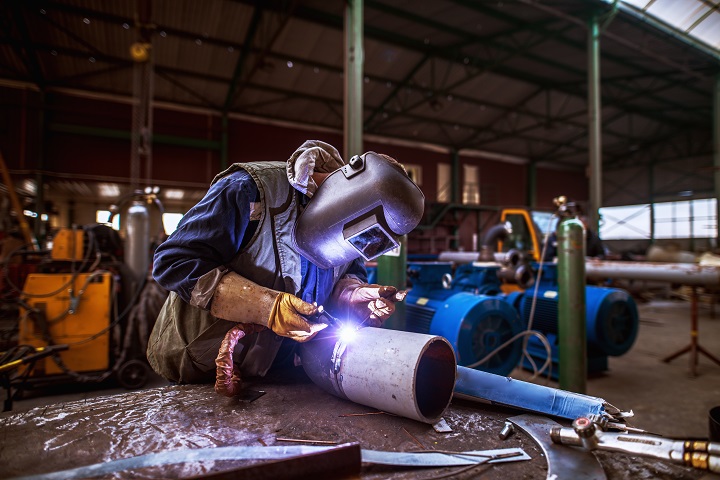 Steel fabrication is the backbone of many industries, transforming raw materials into essential components. This intricate process, managed by skilled steel pipe fabricators, involves melting, mixing, and shaping steel into various forms. From construction beams to industrial equipment, fabricated steel parts are everywhere. Understanding the methods and materials used in this process highlights its importance and the expertise required. Steel pipe fabricators ensure precision and quality, making steel fabrication a critical element in modern manufacturing and construction.
Steel fabrication is the backbone of many industries, transforming raw materials into essential components. This intricate process, managed by skilled steel pipe fabricators, involves melting, mixing, and shaping steel into various forms. From construction beams to industrial equipment, fabricated steel parts are everywhere. Understanding the methods and materials used in this process highlights its importance and the expertise required. Steel pipe fabricators ensure precision and quality, making steel fabrication a critical element in modern manufacturing and construction.
Core Parts of Steel Fabrication
Steel fabrication consists of three main steps: melting raw materials, blending the melted materials to form steel, and shaping the steel into the desired form. This intricate process requires skill and accuracy. Steel pipe fabricators and other experts meticulously oversee each phase to guarantee superior quality results. Here are some key components produced through steel fabrication:
- Bar joists
- Ladders
- Grating
- Skids
- Universal beams
- Pipe racks
- Platforms
- Universal columns
- Industrial equipment
Steel Fabrication Methods
Steel fabrication involves several methods, each suited to specific tasks and materials. Understanding these methods is crucial for producing high-quality steel components.
Effective Steel Cutting Techniques
Cutting steel can be done through various techniques, each with its advantages. Shearing is a straightforward method involving placing raw material between die parts and using a punch to separate it into smaller pieces. Band saws, often equipped with hardened abrasive disks, are ideal for cutting entire steel parts. They offer precision and efficiency.
Cutter torches, powered by natural gas, use extreme heat to cut large steel sections quickly. However, this method affects the material’s properties due to high temperatures. Water jet cutting provides an alternative, using high-pressure water to cut steel without causing distortion or overheating.
Precision Bending of Steel
Bending involves changing the shape of steel by applying significant force. This can be achieved through hammering or using press machines like press brakes and tube benders. It’s essential to control the stress applied to the material to avoid deformation, which would require additional corrective operations.
Welding Techniques in Steel Fabrication
Welding is a common steel fabrication method that uses heat to fuse or bend steel parts. By heating steel to high temperatures, pieces can be joined or shaped effectively. Common heat sources for welding include lasers, electric arcs, and gas flames. This process is vital for creating strong, durable steel structures.
Machining Processes for Steel Shaping
Machining involves removing metal to form specific shapes using tools like drills, lathes, and mills. This method is versatile, allowing for precise shaping and detailing of steel components. It’s essential in producing parts that require exact specifications and high-quality finishes.
Supporting Processes in Steel Fabrication
Steel fabrication includes several supporting processes to enhance quality and functionality. These processes consider the original shape of raw materials and include:
- Steelwork erection
- Surface preparation
- Corrosion protection
Heat treatment is a critical process, involving soaking, heating, and cooling steel to improve its properties. Annealing softens steel, making it more malleable and easier to shape without deformation. These procedures ensure the steel meets specific requirements for various applications.
Essential Supplies for Steel Fabrication
Steel fabrication relies on advanced equipment and software to ensure efficiency and precision. Skilled steel pipe fabricators use cutting-edge technology and a variety of materials to streamline the process. Key supplies include:
- Castings: Speed up the fabrication process and add visual interest.
- Sectional metal: Includes Z shapes, L shapes, bar metal, and rod metal.
- Welding wire: Crucial for joining steel pieces, available in various types.
- Plate metal: Expands the ability to shape steel components.
- Flat metal: Adds texture and visual appeal, commonly in plate and sheet forms.
- Expanded metal: Used for applications needing moisture drainage, like outdoor furniture.
- Fittings: Essential for completing and assembling steel parts.
Engineering and Design in Steel Fabrication
Effective steel fabrication requires comprehensive design and engineering. Detailed drawings with precise size markings are essential for guiding the fabrication process. The quality of the final product depends on accurate designs and consideration of production parameters, such as mechanical properties.
Steel pipe fabricators rely on these designs to create components that meet exact specifications. The integration of engineering principles ensures the fabricated parts are both functional and durable.
The Role of Steel Pipe Fabricators
Steel pipe fabricators play a vital role in the steel fabrication industry. They use their expertise to produce high-quality steel components for various applications. By understanding the intricacies of steel fabrication methods and utilizing advanced tools and materials, they ensure efficient and accurate production.
Why Choose International Pipe for Steel Pipe Fabrication
At International Pipe, we excel as top steel pipe fabricators. With experienced fabricators, advanced technology, and quality materials, we ensure precision and durability in every project. Our customer-focused approach and commitment to timely delivery make us the ideal choice for all your steel pipe fabrication needs. Choose us for unmatched expertise and reliable service.
